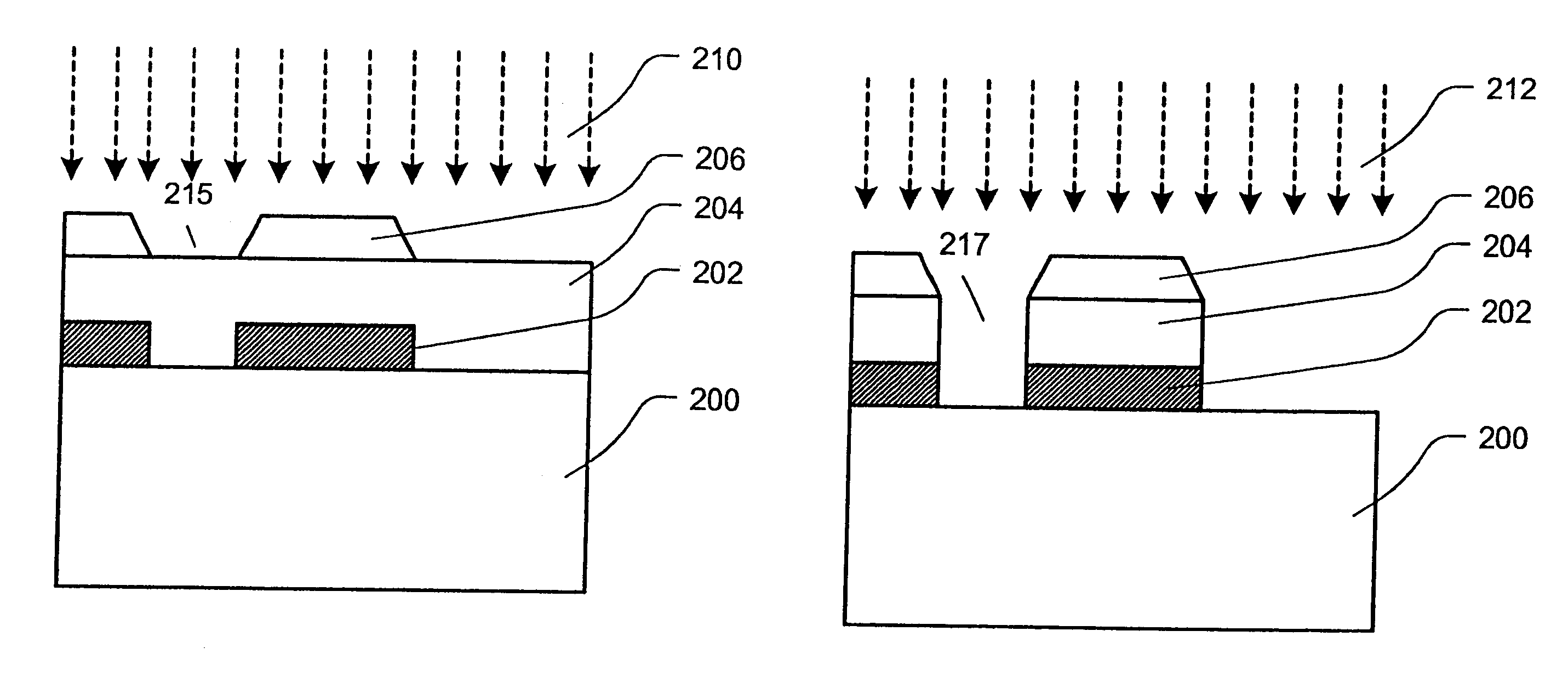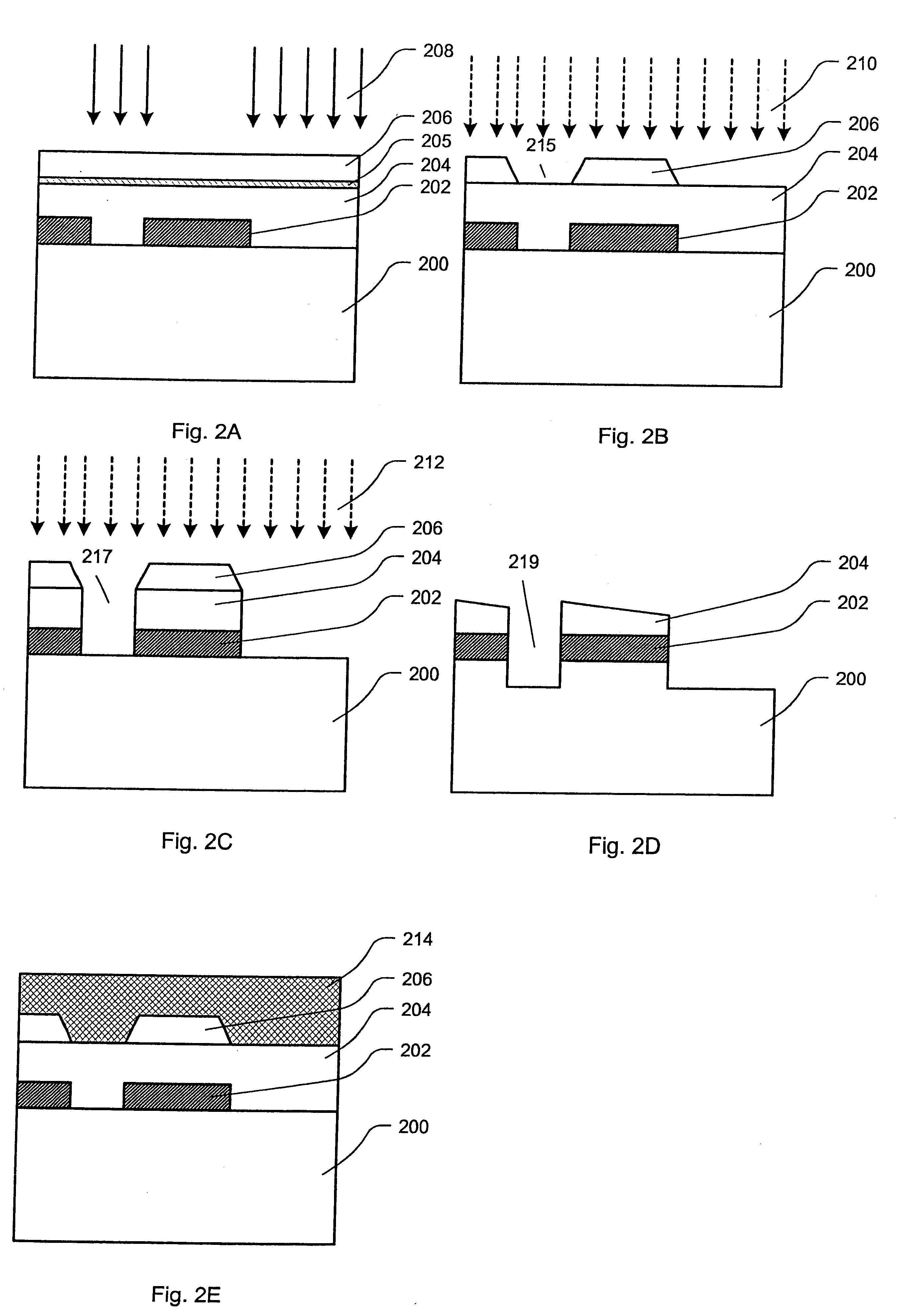Reticle and direct lithography writing strategy
a writing strategy and lithography technology, applied in the field of reticle and direct lithography writing strategy, can solve the problems of increasing the enhancement factor of the mask, the difference in criticality is much less than might be expected, and the near future disappearance of any size error in the mask,
- Summary
- Abstract
- Description
- Claims
- Application Information
AI Technical Summary
Benefits of technology
Problems solved by technology
Method used
Image
Examples
Embodiment Construction
and embodiments practicing the invention is made with respect to the figures. It is presented for purposes of illustration and description. It is not intended to limit the invention to the precise forms disclosed. Many modifications and equivalent arrangements will be apparent to persons of ordinary skill in the art.
FIGS. 1A through 1E depict a coated reticle blank and process steps for a method of removing a non-transmissive layer from the surface of the reticle. In FIG. 1A, the coated reticle comprises a reticle blank 100, a masking or non-transmissive layer 102, a transfer layer 104, and a resist layer 106. Optionally, it may include a plasma resistive layer 105 between the transfer layer 104 and the resist layer 106. The reticle blank 100 often comprises a quartz substrate, a Zerodun.TM. ceramic substrate or an ULE.TM. glass substrate. One form factor currently used is 152 mm by 152 mm by 6.25 mm thick. In one style of mask, the blank is transmissive to an energy beam used durin...
PUM
| Property | Measurement | Unit |
|---|---|---|
| widths | aaaaa | aaaaa |
| wavelength range | aaaaa | aaaaa |
| thickness | aaaaa | aaaaa |
Abstract
Description
Claims
Application Information
 Login to View More
Login to View More - R&D
- Intellectual Property
- Life Sciences
- Materials
- Tech Scout
- Unparalleled Data Quality
- Higher Quality Content
- 60% Fewer Hallucinations
Browse by: Latest US Patents, China's latest patents, Technical Efficacy Thesaurus, Application Domain, Technology Topic, Popular Technical Reports.
© 2025 PatSnap. All rights reserved.Legal|Privacy policy|Modern Slavery Act Transparency Statement|Sitemap|About US| Contact US: help@patsnap.com



